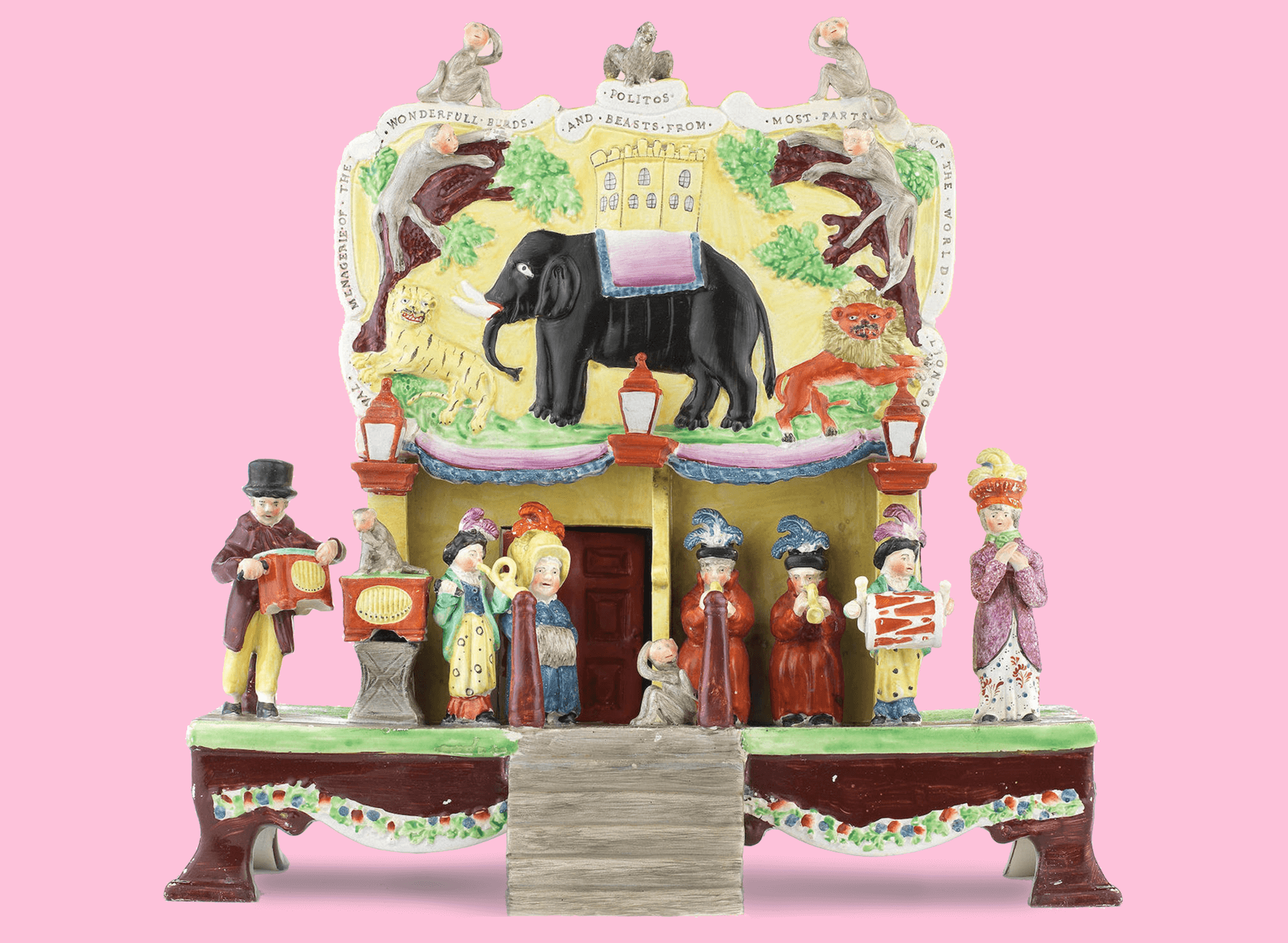Bull-baiting figure
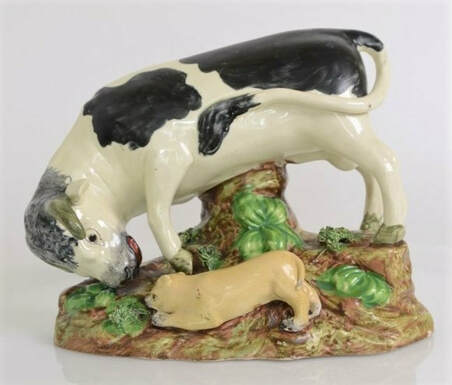

Bull-baiting was an ancient sport which involved pitting a bull against another animal. This was usually a dog such as a bull terrier, bull dog or mastiff.
In England during the time of Queen Anne, bull-baiting was practiced in London at Hockley-in-the-Hole twice a week and was also reasonably common in provincial towns. At Tutbury, a bull was tied to an iron stake so that it could move within a radius of about 30 feet. The object of the sport was for the dogs to immobilize the bull.


Before the event started, the bull’s nose was blown full of pepper to enrage the animal before the baiting. The bull was often placed in a hole in the ground. A variant of bull-baiting was “pinning the bull”, where specially-trained dogs would set upon the bull one at a time, a successful attack resulting in the dog fastening his teeth strongly in the bull’s snout. The extinct Old English Bulldog was bred especially for this sport.
Bull-baiting continued into the 19th century. Bull-baiting dogs, including bulldogs and bull terriers, were bred to bait animals, mainly bulls and bears. During bull-baiting the dog would attempt to flatten itself to the ground, creep as close to the bull as possible, then dart out and attempt to bite the bull in the nose or head area. The bull would often be tethered by a collar and rope which was staked into the ground. As the dog darted at the bull, the bull would attempt to catch the dog with his head and horns and throw it into the air.
The sport began to die out early in the 19th century, both because the baiting caused a public nuisance and because of new concerns about animal cruelty. A Bill for the suppression of the practice was introduced into the House of Commons in 1802 but was defeated by thirteen votes. It was not finally outlawed until parliament passed the Cruelty to Animals Act 1835, which forbade the keeping of any house, pit, or other place for baiting or fighting any bull, bear, dog, or other animal.
More Figures of the month
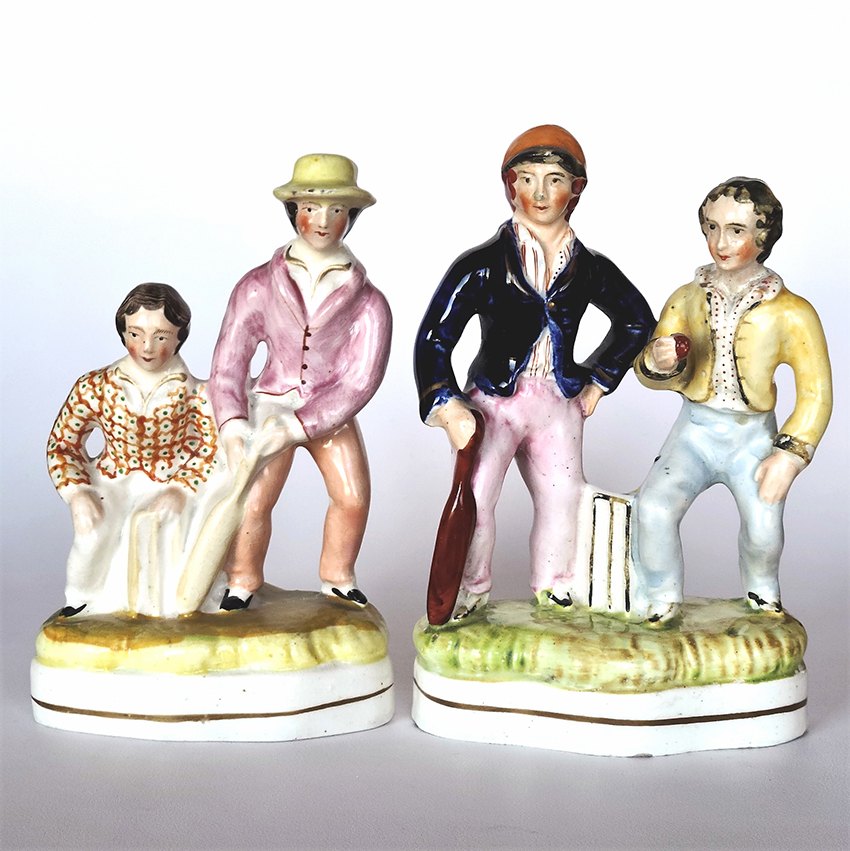

Boys playing cricket
This is a pair of Staffordshire figures of unidentified boys playing cricket, standing 6 ½” and 6 ¾” tall, dating to around 1850.
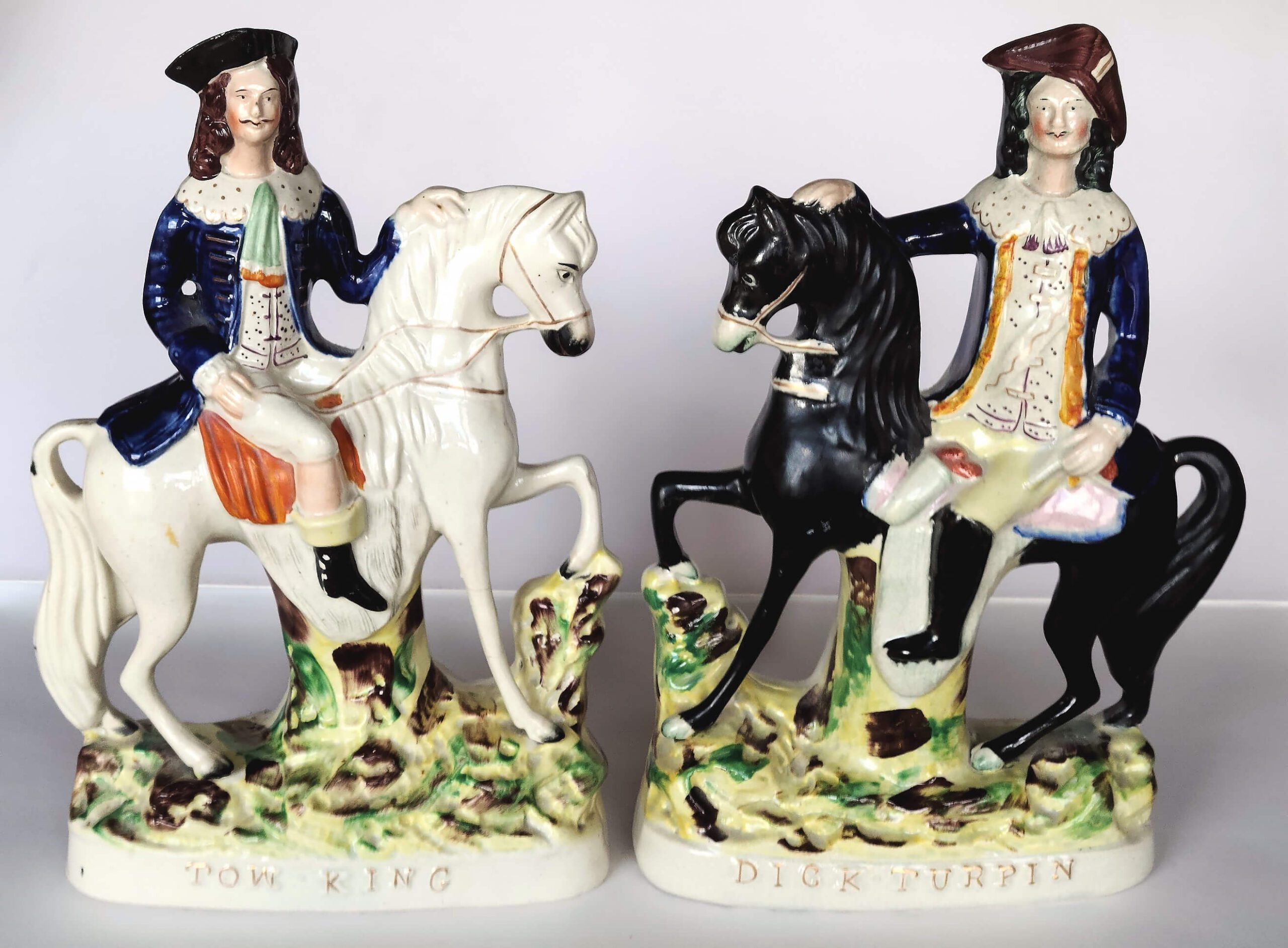

Tom King and Dick Turpin
This is a fine pair of Staffordshire figures of Tom King and Dick Turpin, probably originating from a theatrical production. Note the four separately moulded legs on each horse.
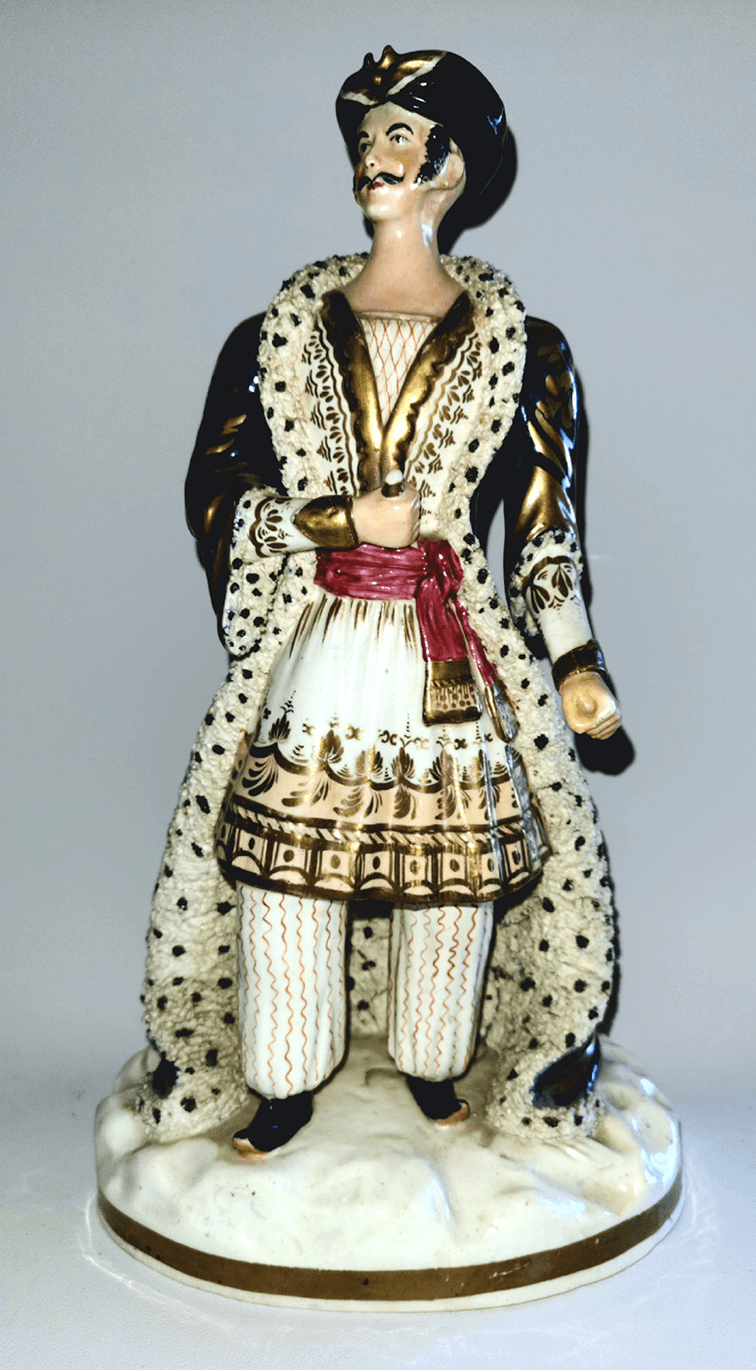

Artabanes
This is a theatrical figure representing an actor in the role of Artabanes, from the opera Artaxerxes. The figure stands 11 3/4” tall, dates to approximately 1830-1840, and is very rare. There is a dagger in his right hand, part of the blade being hidden beneath his sash. The interior and the edging of his coat are fully lined with ermine.
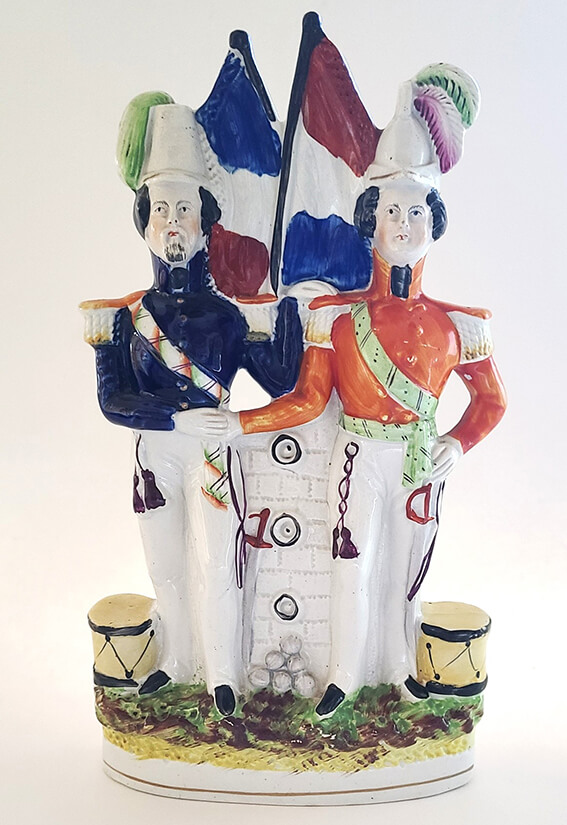

Napoleon III with Prince Albert
This is a figure of Napoleon III with Prince Albert, each with a drum on the ground and to the side. The figure stands 10 ¾” and dates to about 1854.
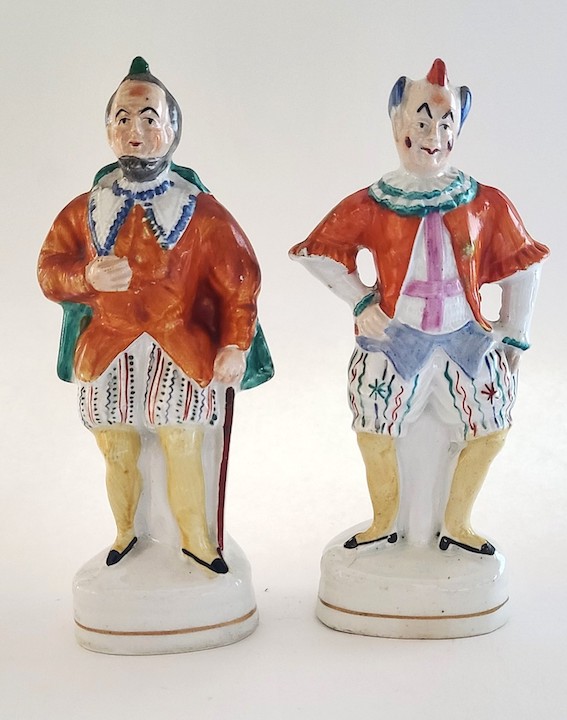

A pair of clowns
This is a fine pair of Staffordshire clowns, both standing 6 ½” tall, dating to circa 1860. Each is wearing pantaloons, with the figure on the left holding a cane.
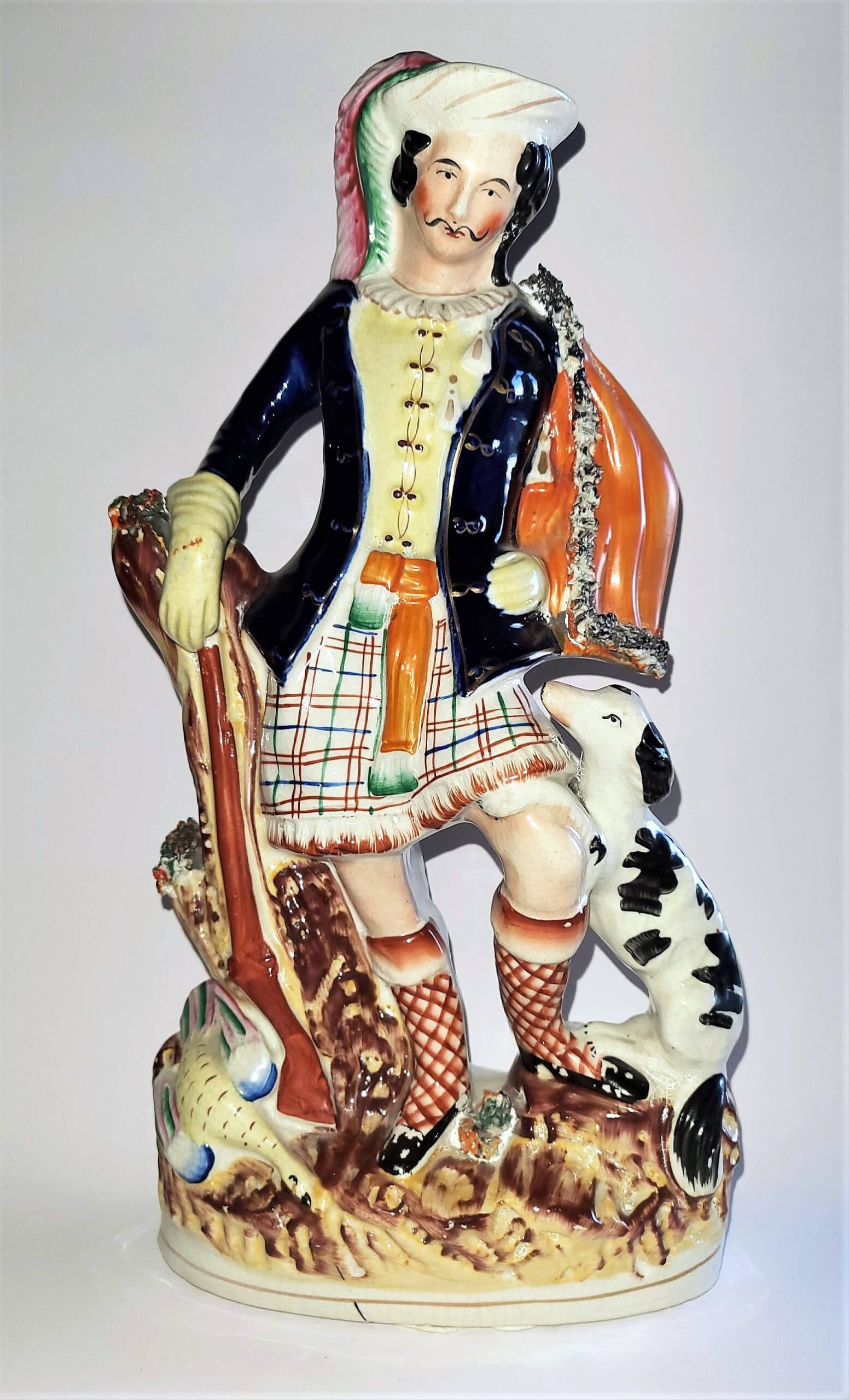

Scottish hunter
This is an interesting example of a Scottish hunter, wearing kilt and underglaze blue coat, with a dog at his knee and a rifle resting near his right hand. The figure stands 14 ¼” tall and dates to about 1860.


